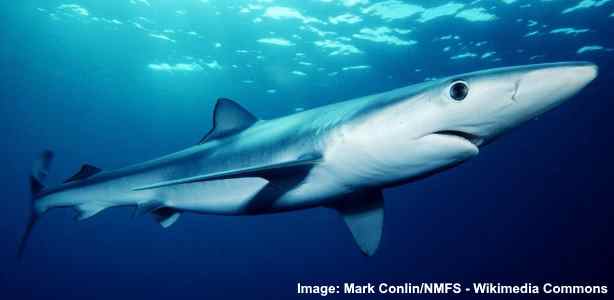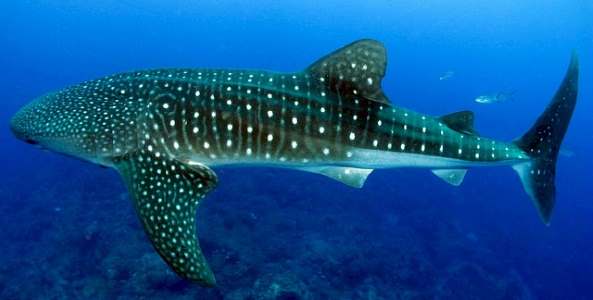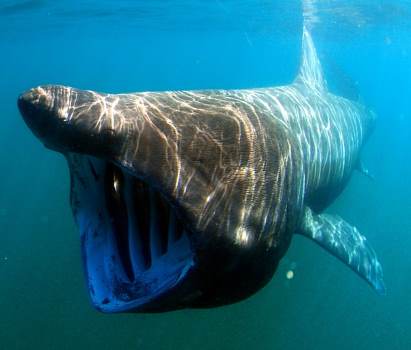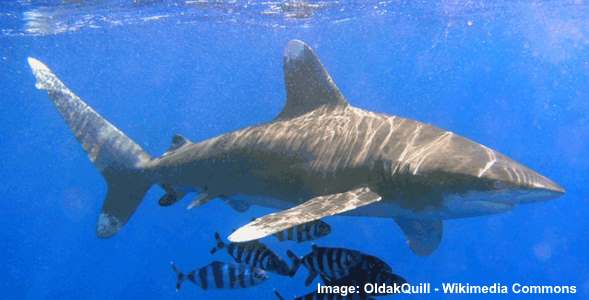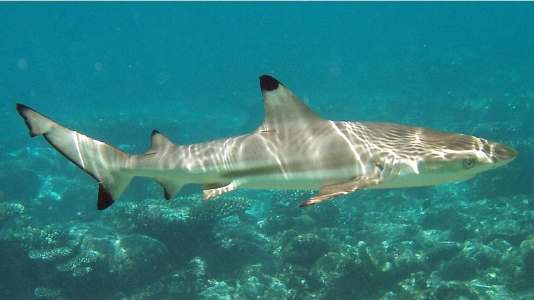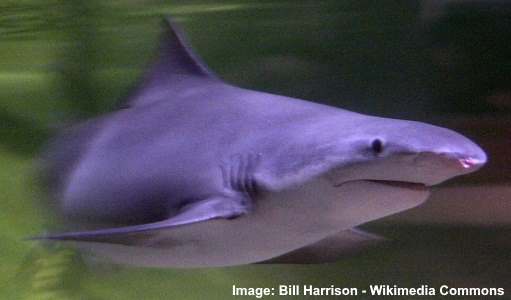Types of Sharks: Species and Breeds (With Names and Pictures)
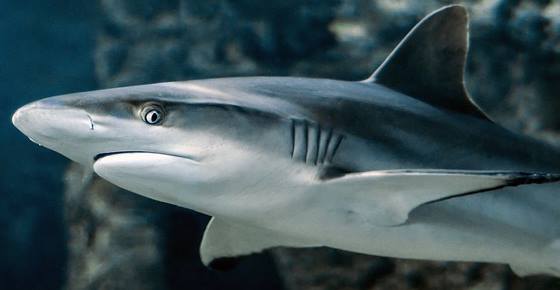
Sharks are among the largest types of fish that inhabit the oceans of the world. Species of sharks such as the whale shark, basking shark, and great white shark can outsize other fish by many meters. Some types of shark are quite small species of fish. Most types of sharks are fearless hunters that top of the oceans’ food chain. Although the names of some sharks such as the “great white” can instill fear, many species of sharks are placid, calm fish.
Sharks are a type of cartilaginous fish that are classified in the marine animal superorder (clade) Selachimorpha. Because they have skeletons made out of cartilage and not bones, sharks are related to all types of stingrays. There are over 500 species of sharks that are divided into 8 orders. Sharks are classified by their number of gills, body shape, fins, snout, and mouth.
Despite the fact that sharks are apex predators (predators at the top of a food chain), many species of sharks are classified as endangered. Even species of sharks that are household names such as the great white shark, basking shark, and hammerhead shark are under threat.
In this article, you will learn about the identifying features of the most popular kinds of sharks. Along with the sharks’ scientific names, pictures and descriptions of these fascinating fish will help you identify them.
Types of Sharks with their Picture and Common Name
Let’s look in detail at the many types of sharks that inhabit oceans and seas around the world, starting with the most famous and fearsome shark, the great white shark.
Great White Shark (Carcharodon carcharias)
The scientific name of the great white shark literally means “sharp or jagged tooth.” When you see pictures of large great whites, it is easy to see how they got their name.
Great white sharks are a species of mackerel shark that are found in all the major oceans. An adult shark can grow up to 20 ft. (6 m) in length and weigh 4,200 lb. (1,905 kg). They have a pointed nose, gray upper body, and white underbody. Great whites have a large dorsal fin and a large triangular caudal (rear) fin.
These sharks are feared predators and will eat sea animals, other fish, and seabirds.
Contrary to popular belief, great white sharks don’t hunt and rarely attack humans. Usually, attacks on humans occur where the shark’s senses are impaired. However, from all marine animals, great whites have been linked to many attacks on people.
Blue Shark (Prionace glauca)
Blue sharks get their name from their blue-colored body that is deep blue on the top and light blue on the sides. These are slow-swimming sea creatures that inhabit both temperate and tropical waters.
Female blue sharks can grow up to 10 ft. (3 m) with the males being slightly smaller. Looking at pictures of blue sharks, you will notice that they have an elongated slender body. Depending on the sex, blue sharks can weigh on average between 90 lb. (41 kg) and 302 lb. (137 kg). They generally feed on mackerel, tuna, squid, and even small sharks.
Blue sharks are said to be the most distributed type of shark in the world. Because of this, they are not classified as an endangered species.
Hammerhead Sharks (Sphyrnidae)
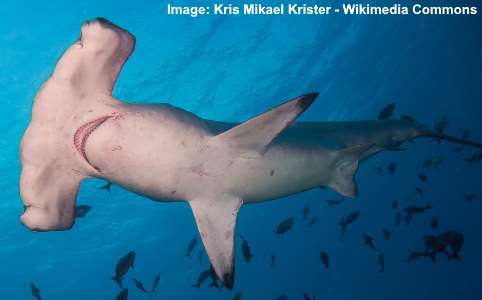
Hammerheads include several species and tend to be bottom feeder sharks. In the picture: scalloped hammerhead Sphyrna Lewini
Looking at pictures of hammerheads, it is not difficult to see how they get their common name. There are 9 species of hammerhead sharks, all with flattened heads in the shape of a hammer or mallet.
The smallest species of hammerhead shark is the bonnethead shark. These grow to about 3 ft. (0.9 m) long. As its name suggests, the great hammerhead shark is the largest of the species and can be up to 20 ft. (6 m) long.
Hammerheads are a type of ground shark and tend to swim on ocean floors. There they feed on squid, fish, and octopus. They also use their unique heads to “hammer” stingrays before eating them.
One of the unique features of hammerheads distinguishing them from other sharks is that they swim in shoals.
Tiger Shark (Galeocerdo cuvier)
Tiger sharks are a large species of gray-colored predatory shark that is a type of ground shark. The name tiger shark comes from the dark stripes down the sides of its body. However, this identifying feature is usually more apparent on younger sharks.
As the shark grows, it can resemble in appearance a great white shark, although, shorter in length. Although tiger sharks rarely attack people, there have been cases where they attacked humans and are regarded as one of the most dangerous shark species.
These large sharks tend to live near the bottom, feeding on a wide variety of food. This shark’s diet has everything from small fish to turtles, sea snakes, and dolphins. Tiger sharks tend to grow to between 10 and 14 ft. (3 – 4 m) in length and can weigh up to 1,400 lb. (635 kg).
Whale Shark (Rhincodon typus)
The common name of this species of shark gives a clue to its size. The whale shark is the largest shark species alive today with the largest recorded specimen being 62 ft. (18.8 m) long.
Huge whale sharks are classified in the order Orectolobiformes and they inhabit tropical marine environments. Whale sharks are a type of carpet shark which are named so due to their carpet-like patterning.
Some facts about this species of shark also help to give an indication of its enormous size. Their average length is 32 ft. (9.8 m), they can weigh up to 16 US tons (15,000 kg), and have mouths that are 5 ft. (1.5 m) wide.
These large fish are also classed among the filter feeder sharks. They swim with their huge mouths open gathering plankton, krill, and small fish in its mouth.
Basking Shark (Cetorhinus maximus)
When it comes to identifying large sharks, the basking shark is the second-largest shark. Similar to the whale shark, this is a filter feeder that feeds on plankton as it swims with an open mouth.
Large basking sharks grow to between 20 and 26 ft. (6 – 8 m) in length. They have dark gray skin that has a mottled appearance. Apart, from its massive size, the basking shark is identified by its 3-ft. (1-m) wide mouth. You will also notice that its gills almost go around its body just behind the head. Another identifying characteristic is its pointed snout.
Other common names for the basking shark include elephant shark, bone shark, or sail-fish. All these shark names refer to different identifying features of this shark species.
Dogfish Sharks (Squalidae)
Some of the smallest species of sharks are dogfish sharks belonging to the family Squalidae. There are about 119 species of shark in this family making it the largest of the shark orders.
The name “dogfish” comes from their pack-hunting behavior as they chase other fish. Sometimes, these packs of dogfish can number up to 1,000. Other names for sharks in this order include spiny dogfish, dog sharks, and mud sharks.
These small sharks have grayish-brown skin and grow to between 31” and 50” (0.8 – 1.3 m) depending on the species. Other identifying characteristics of dogfish sharks are their short snouts, mouths underneath their bodies, and lack of anal fin.
Shortfin Mako Shark (Isurus oxyrinchus)
The shortfin mako shark is a type of mackerel shark that is one of the fastest sharks in the oceans. Part of its scientific name means “pointy snout.” If you look at pictures of this metallic blue-colored shark, you can see how it gets that name. The name “mako” for the shark is from the Māori language meaning “tooth.”
This large species of shark can reach lengths of up to 10 ft. (3.2 m). The shortfin shark can be found in temperate and tropical oceans and seas. The shark is identified by its elongated cylindrical body and shiny blue colors.
There is also a related species of this shark called the longfin which tends to inhabit warmer waters.
Bull Shark (Carcharhinus leucas)
Like the great white shark, the bull shark is an aggressive species of shark that has been known to attack humans. This shark gets its name due to its stocky, bull-like build, aggressive behavior, and a flat snout.
One of the unique features of bull sharks is that they can live in freshwater and saltwater. In fact, other names for this shark indicate where they can be found. For example, Lake Nicaragua shark, Zambezi shark, estuary whaler, and river shark are all local names for the bull shark.
Large bull sharks can grow to an average of 8 ft. (2.4 m) with males being slightly smaller. These carnivorous aggressive sea animals feed on other sharks, stingrays, turtles, and birds.
These sharks prefer shallow waters and can attack humans in their territory. In fact, it is estimated that there are more bull shark attacks on people than from great whites.
Oceanic Whitetip Shark (Carcharhinus longimanus)
Both the common and scientific names for the oceanic whitetip describe identifying features of this predatory fish. The shark has long pectoral fins that have white coloring at their tips. Other common names for this shark include sand bar shark, silvertip shark, and lesser white shark.
This is a type of shark that prefers deep, warm waters of the Atlantic, Pacific, and Indian oceans. The whitetip shark has the classic “shark shape” with a flattened body, pointed snout, and razor-sharp teeth.
Being an apex predator of the oceans, there are very few things whitetip sharks don’t eat. They feed on bony fish, crustaceans, gastropods, turtles, and tuna. They either bite their prey or swim through shoals of fish with their mouth open.
Blacktip Reef Shark (Carcharhinus melanopterus)
It is easy to identify the blacktip reef sharp due to the black coloring on the tips of its fins. As its name also suggests, these sharks are found swimming in tropical reefs and inshore waters.
Although blacktip sharks are often found near to shores, their shy nature means they rarely threaten people.
Blacktips have the classic elongated, torpedo-like shape common to many sharks in the family Carcharhinidae. Apart from identifying them by their black-tipped fins, these sharks have a large first and second dorsal fin and large triangular tail fin. They can reach lengths of around 6 ft. (1.8 m).
Their diet consists of most marine animals and fish that live around coral reefs.
Sand Tiger Shark (Carcharias taurus)
Living near sandy shorelines has given this species of shark the name sand tiger shark. Even though this shark looks aggressive and is a strong swimmer, it is placid and non-threatening.
The scary look of this shark is due to its long-pointed snout and gray appearance similar to a small great white. These predatory sharks can be found in the warm waters in the Mediterranean, the coasts of Japan and Australia, and along the eastern coasts of North and South America.
These large stout sharks can reach lengths of 10.5 ft. (3.2 m). They are identified by their pointed, flatten conical snout, sharp pointed teeth, and large elongated caudal fin. Sand tiger sharks are bottom feeders that usually eat bony fish.
Because of their frightening appearance but docile nature, these are usually the type of sharks kept in public aquariums. In the wild, they are classified as vulnerable due to human threats on their native habitats.
Lemon Shark (Negaprion brevirostris)
Lemon sharks are in the same family as blue sharks, reef sharks, and tiger sharks. The common name for the lemon shark comes from its pale yellow-brown coloring. This provides excellent camouflage when it is swimming in shallow sandy inshore coastal waters.
These medium-sized sharks have a flattened body, short broad snout, and 2 large dorsal fins of the same size. Usually, lemon sharks grow to between 8 and 10 ft. (2.4 – 3 m). Lemon sharks also have the ability to live in freshwater. However, they are usually found along the coastlines of North and South America and off the western coast of Africa.
Lemon sharks are nocturnal feeders and are selective about what they eat.
Speartooth Shark (Glyphis glyphis)
Speartooth sharks are a type of river shark that are found in tropical rivers and coastlines of Australia and New Guinea. This is a rare species of shark that is classified as endangered.
Identification of speartooth sharks is by their gray color, broad snout, and small eyes on the front of their heads. The shark has large pectoral and dorsal fins as well as an elongated caudal fin. These rare sharks grow up to 8.5 ft. (2.6 m) long.
This shark gets its name from the sharp triangular teeth that look like the tip of a spear.
Dusky Shark (Carcharhinus obscurus)
Dusky sharks are the largest species of shark in the family Carcharhinidae. These sharks are found in deep tropical oceans and warm continental seas. They are also a migratory species of shark that spend summers near the poles and winters near the equator.
This large fish species can grow up to 14 ft. (4.2 m) long. It is identified by its streamlined body, short snout, and large dorsal fin. If you see pictures of this shark, you will notice its pectoral fins in the shape of a sickle and an elongated caudal fin.
Other common names for dusky sharks are the brown common gray shark, river whaler, slender whaler shark, and bay shark.
Goblin Shark (Mitsukurina Owstoni)
One of the rarest species of shark on this list is the goblin shark. This shark lives in deep-sea waters and there is only one species in the family Mitsukurinidae. Despite this being a rare shark, it is not endangered.
This is also a very unusual shark due to its unique snout and elongated look. The pointed snout extends above its small mouth. It has a slender body and long caudal fin. Because this shark is rarely seen, not much is known about it.
Brownbanded Bamboo Shark (Chiloscyllium punctatum)
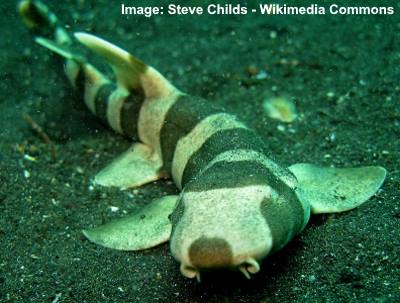
The small brownbanded bamboo shark has dark bands around its body which are pronounced when it’s young
Brownbanded bamboo sharks are a small species of shark in the family Hemiscylliidae. These brown-colored sharks tend to spend much of their time swimming along the bottom similar to catfish. In fact, they have barbels similar to these fish and also have the common name “cat shark.”
As their name suggests, these small sharks have brown or dark bands around their bodies. These markings are more pronounced in juvenile species and tend to fade with age. Brownbanded bamboo sharks grow to about 3.2 ft. (1 m) in length.
In the wild, they are endangered due to loss of habitat. However, they are common fish in aquarium and fish tanks.
Megamouth Shark (Megachasma pelagios)
One of the rarest species of sharks is the megamouth shark. This is a species of deep-water shark that has rarely been seen. Similar to basking sharks and whale sharks, this is a filter-feeding shark.
As its name suggests, this shark has a mega mouth. One of these sharks was caught off the coast of California. It was 16 ft. (5 m) in length and had a large head and large mouth that is up to 4 ft. (1.3 m) wide. An interesting feature of its mouth is its rubbery lips and small teeth.
From all the sharks on this list, the megamouth shark is one of the few species that looks more like a whale than a shark.
Related articles:


